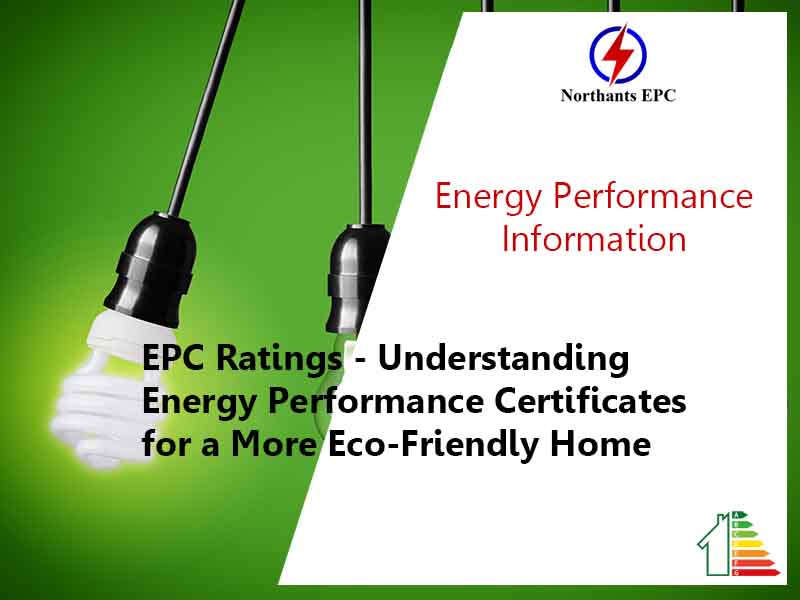EPC Ratings – Understanding Energy Performance Certificates for a More Eco-Friendly Home
Do you ever wonder how energy efficient your home is? If you live in the UK and have bought, sold, or rented a property recently, you might be familiar with Energy Performance Certificates (EPCs). These certificates are not just a legal requirement for property transactions but also hold valuable information about a home’s energy use. With rising energy costs and a growing concern for the environment, understanding EPC ratings can help you make your home more eco-friendly while saving on energy bills.
What Exactly are EPCs?
Energy Performance Certificates are documents that assess and rate the energy efficiency of a building. They provide an overall rating of a property’s energy performance, ranging from A (most efficient) to G (least efficient). The EPC is valid for ten years and is based on factors such as energy consumption per square meter and carbon dioxide emissions in tonnes per year.
In England, Wales, and Northern Ireland, an EPC is mandatory for potential buyers and tenants before a property is put on the market. In Scotland, it must be displayed within the property. The certificate also outlines potential improvements to boost energy efficiency, with each element of the property, such as walls, roof, windows, heating, and lighting, rated from very poor to very good.
It’s essential to note that some buildings, like places of worship and listed properties, are exempt from needing an EPC.
Decoding the EPC Rating Scale
The EPC rating scale follows a color-coded system with bands from A to G. Each band corresponds to a range of Standard Assessment Procedure (SAP) points from 1 to 100. Here’s a breakdown of the ratings:
– A (92-100 SAP points): Most efficient, green end of the scale.
– B (81-91 SAP points)
– C (69-80 SAP points)
– D (55-68 SAP points)
– E (39-54 SAP points)
– F (21-38 SAP points)
– G (1-20 SAP points): Least efficient, orange end of the scale.
The higher the EPC rating, the more energy-efficient the property is, leading to lower heating and lighting costs.
Why EPC Ratings Matter
If you’re a landlord, since April 2020, you can’t let a property with an EPC rating below E, unless you have a valid exemption. Moreover, a higher EPC rating can make your property more appealing to potential buyers or tenants. An energy-efficient home is not only environmentally responsible but also helps save on utility expenses.
How to Obtain an EPC Rating
To get an EPC for your property, you need to engage an accredited assessor from the government’s EPC register. The assessor will visit your property and assess its energy usage. The cost of this service may vary depending on the assessor’s fees and the size of your house.
Checking Your Home’s EPC Rating
Curious about your home’s EPC rating? You can easily find it on the government’s website, where your property will be listed alongside other buildings of similar size.
Improving Your EPC Rating
Suppose your EPC rating isn’t as high as you’d like it to be. In that case, the certificate will provide recommendations on how to enhance your home’s energy efficiency. Here are some suggestions to consider:
1. Upgrading Boilers: Installing more efficient boilers or opting for newer models can significantly improve your rating. Combining this with intelligent heating controls can lead to further energy savings.
2. Enhancing Windows: Windows can be a significant source of heat loss. Repairing and draft-proofing period-style windows can be a cost-effective approach. Consider slim double (secondary) glazing to improve thermal and sound insulation while maintaining an authentic appearance.
3. Insulating Floors: Older buildings often have suspended timber floors, causing heat loss due to gaps in the floorboards. Insulating these floors with mineral wool can help retain heat and reduce energy consumption.
4. Switching to LED Lighting: An easy and quick way to boost energy efficiency is by replacing old halogen or incandescent bulbs with energy-efficient LED lights, saving on both costs and energy.
5. Solid Wall Insulation: If your property has solid brick walls, consider investing in solid wall insulation. Though costlier than cavity wall insulation, it offers significant long-term savings on heating bills.
Embrace Energy Efficiency with EPCs
Energy Performance Certificates are more than just legal requirements; they offer valuable insights into your home’s energy efficiency and provide a roadmap for improvements. By following the recommendations in your EPC and implementing energy-efficient measures, you can not only make your home more eco-friendly but also save money in the long run. Remember, every small step toward energy efficiency makes a difference in building a sustainable future for our planet.
